Porcelain Veneers
Your Smile - Better Than Ever
(Continued)
Porcelain Veneers — Newer Materials And Methods
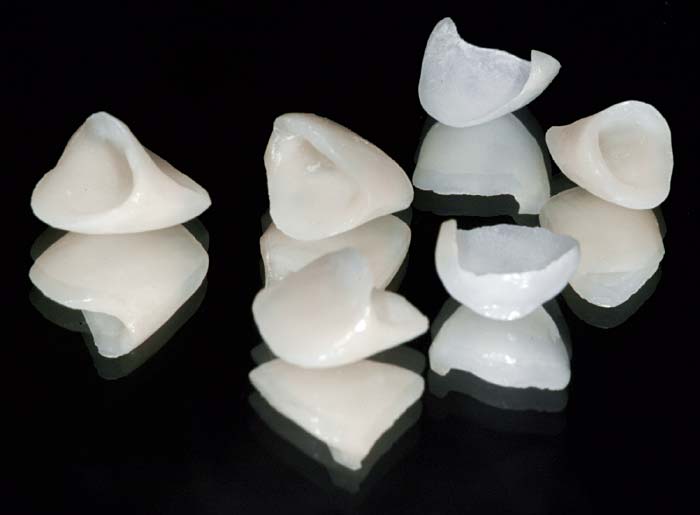 |
Glass Ceramics: For years, dental (feldspathic) porcelain has been the material of choice for the most aesthetic dental veneers as well as crowns. It comes in a powdered form that is mixed with water to form a paste. The paste is used to build the veneers up layer upon layer. One disadvantage of this material is that the high degree of silica (glass) and layering can compromise strength tending to make it weak and prone to fracture — not ideal for heavy biting forces, especially for those who clench or grind their teeth.
Glass Ceramics With Strengthening Fillers: A major breakthrough for dental ceramics was the addition of leucite (a glass-like, rock-forming mineral) to strengthen the porcelain without decreasing translucency. Leucite-reinforced ceramics were introduced in the 1990s and allowed for the bulk of the veneer to be fabricated in one piece. They are stronger and also don't need to be as thick. Today, a state-of-the-art material called lithium disilicate is being used. It has double the strength of leucite and can be as thin as three tenths of a millimeter. It optimizes translucency, durability and strength, for both veneer and crown restorations. It provides all the qualities needed in a veneer — strength, beauty, and ease of fabrication. It can also be used in a broader spectrum of situations.
Best Of Both Worlds: Both Leucite-reinforced ceramics and lithium disilicate can be pressed or milled into shape, thereby increasing the accuracy of their fit. The veneers can then be reduced in size and layered with feldspathic porcelain to create beautiful, lifelike results.
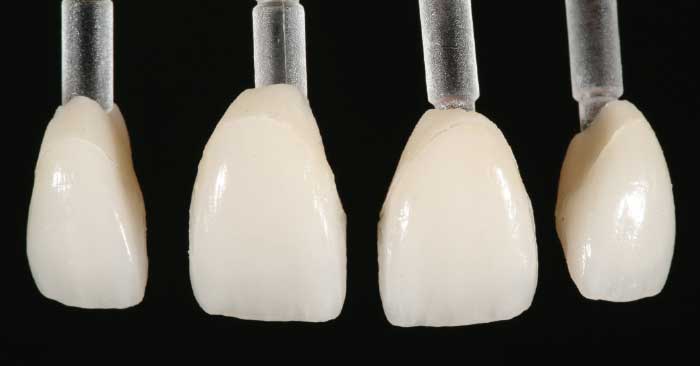 |
| The lab technician can handle very thin veneers with the aid of adhesive rods. |
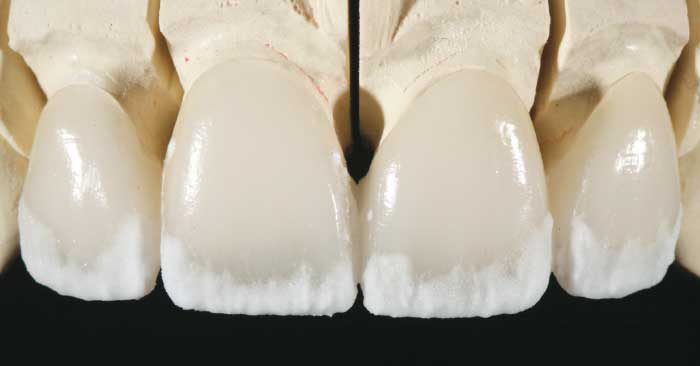 |
| The lab technician paints ceramic paste on the edges to create a realistic translucency. |
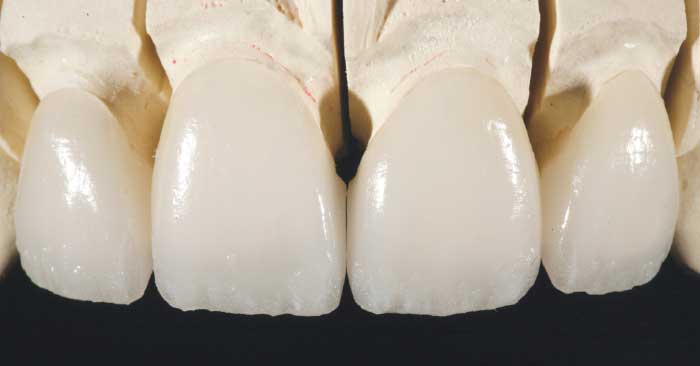 |
| The finished veneers are now ready for placement by the dentist. |
Evolution of Dental Porcelains — A Material Choice
When it comes to materials and techniques used to make the veneers, different kinds of porcelain and manufacturing techniques serve different purposes. A skilled dentist and ceramist will know you and your particular situation well enough to choose the best porcelains available. In some situations the strength of the material is most important, in others, the ability of the porcelain to mask underlying dark tooth color. And for aesthetics it may be the ability to blend one or more veneers into natural tooth structure that becomes the driving force.
Your New Veneers
Once your new veneers are ready, your dentist will bond them to your teeth. The tooth surfaces are cleaned and etched with a mildly acidic gel to make them adherent. The veneers are then attached using a very thin resin luting cement (joining agent). The physical bond formed is very strong creating a seamless unit between the tooth surface and veneer.
After all this hard work, you will want to make sure that your veneers last for years. You can take care of them by maintaining good oral hygiene and getting regular dental examinations/cleanings. Avoid habits that could chip or damage your veneers, for example, biting into or cracking hard objects like nuts, ice, and hard candy. If you have a clenching or grinding habit, it is beneficial to use a night guard and prevent putting excessive forces on the teeth.
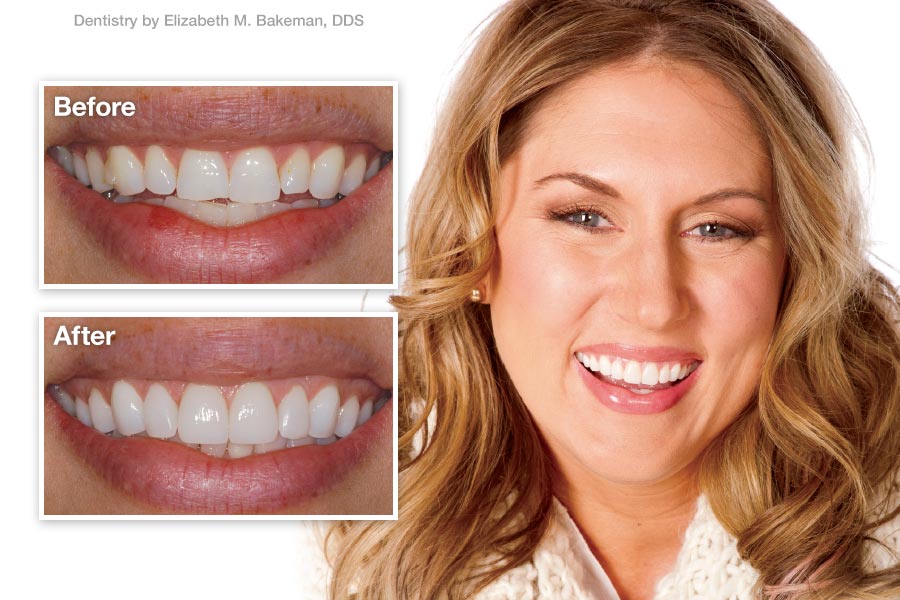 |
In the end, a successful outcome means you can go out into the world with a wide, confident and updated smile for years to come.




